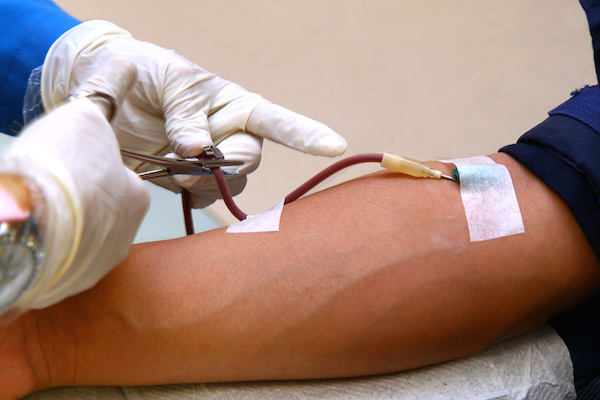
WEDNESDAY, April 24 (HealthDay News) — A blood test that assesses levels of a compound produced in the stomach appears to be a strong indicator of whether there will be heart trouble down the road, researchers report.
The higher the levels of the compound — called trimethylamine-N-oxide (TMAO) — the greater the risk for cardiovascular problems, said the Cleveland Clinic team. Eventually, TMAO could be a target to help prevent or reduce the risk of heart problems, the researchers suggested.
“A new blood test measuring something in the blood that is generated by the bacteria in our gut actually predicted in a strong and powerful way the future risk of heart attack, stroke and death,” said lead researcher Dr. Stanley Hazen, from the Clinic’s Lerner Research Institute.
Measuring TMAO predicted heart risk better than other blood tests or the usual risk factors, such as high blood pressure, cholesterol and smoking, he noted.
“This is a potentially new target we can go after to prevent heart disease,” Hazen said.
In a preclinical study, the researchers found that dietary choline — found in egg yolks — is metabolized into TMAO. Carnitine, found in red meat, is another potential source of the compound. According to Hazen, TMAO changes how cholesterol is metabolized. “It’s not changing the cholesterol in your blood, it’s changing how the cholesterol is being managed,” he said.
More specifically, TMAO helps cholesterol attach to blood vessels. It also makes it harder for the liver and the intestines to get rid of cholesterol, he explained.
“This new blood test may help identify people who are most in need of getting preventive cardiology help,” Hazen said.
Because TMAO levels seem related to diet — those who eat the most meat have the highest levels — Hazen said the test could help people tailor their diets to reduce the risk of cardiovascular problems.
Eating a heart-healthy diet that is low in fats, dairy and sugar — as recommended by the American Heart Association — tends to reduce TMAO, Hazen said. Vegetarians have the lowest levels of TMAO, he noted.
In this study, published in the April 25 issue of the New England Journal of Medicine, Hazen’s team collected data on TMAO levels from more than 4,000 patients and followed them for three years on average.
As TMAO levels increased so did the risk for heart attack, stroke or heart disease, the investigators found. Those with the highest levels of TMAO had 2.5 times the risk for these outcomes compared to those with the lowest levels of TMAO, the study authors reported.
Dr. Gregg Fonarow, a spokesman for the American Heart Association and professor of cardiovascular medicine and science at the University of California, Los Angeles, said that “there has been increasing interest in the role that intestinal microbial metabolism can play in metabolic and cardiovascular diseases.”
Recent studies have suggested that TMAO may play a role in the initiation and progression of atherosclerosis (a harmful buildup of sticky plaque in the arteries), he said.
Noting that intestinal metabolism influences production of this metabolite, Fonarow said “these findings raise the possibility that modulating intestinal microbe metabolism to decrease TMAO production could be therapeutic.”
But more research is needed, he added. “Whether TMAO is just a marker of cardiovascular risk or turns out to be an actual mediator and hence a promising target for cardiovascular prevention and treatment will require further study,” Fonarow said.
Dr. Joseph Loscalzo, from Brigham and Women’s Hospital and Harvard Medical School in Boston, writes in an accompanying journal editorial that the findings suggest a host of possible novel strategies for preventing heart disease. Besides limiting consumption of choline-rich foods, he said these might include use of probiotics to alter microbiota in the gut.
Although the study found an association between higher levels of TMAO in the blood and increased risk of cardiovascular problems, it did not prove a cause-and-effect relationship.
More information
For more on how to reduce heart risks, visit the U.S. National Institutes of Health.

